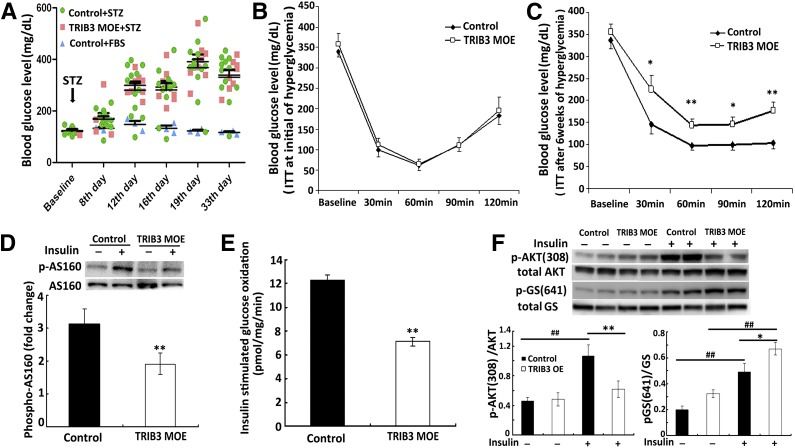Figure 2.
High-glucose–induced insulin resistance in TRIB3 MOE mice. A: Induction of hyperglycemia in control and TRIB3 MOE 20-week-old male mice (n = 8–12) by intraperitoneal injection of STZ (50 mg/kg BW for 5 consecutive days). B: ITTs (Humalog, 0.3 units/kg BW) were done at the very initial hyperglycemia (day 7), showing similar insulin sensitivity between groups. C: ITT (Humalog, 0.3 units/kg BW) conducted after 6 weeks of hyperglycemia. D: Skeletal muscle of TRIB3 MOE mice showed impaired insulin-stimulated p-AS160 compared with control mice. E: After 6 weeks’ exposure to hyperglycemia, insulin-stimulated glucose oxidation rates were significantly decreased in the skeletal muscle of TRIB MOE mice compared with hyperglycemic control mice. F: Decreased insulin-stimulated p-AKT(308) in skeletal muscle of hyperglycemic TRIB3 MOE mice and increased p-GS (641) in TRIB3 MOE muscle. Data are means ± SEM. *P < 0.05, **P < 0.01 vs. the control group, and ##P < 0.01 vs. corresponding control by the Student t test and two-way ANOVA.

